Mike Cannavo, aka The PACSMan, is founder and president of Image Management Consultants.

Give me a brief history of PACS.
Well, for one, PACS finally works, so that’s a real good start. [laughs] Technology has finally caught up to the promises that were made over two decades ago about PAC systems allowing “any image any time, instantaneously,” although we’ve also become a lot more realistic on how we define instantaneously as well. Customers are also becoming much more educated, although the information they get from vendors is often biased towards a particular vendor’s PAC system. Unfortunately IT has very few resources for information, as most of this as been geared towards radiology.
Why is that?
Until a few years ago, radiology departments – heck, nearly all departments in the hospital for that matter — pretty much operated in a vacuum and made their own decisions. Now with the ultimate goal to have an EHR/HIE established by 2014, IT plays a much more important role in the decision-making process. Radiology still gets to call the shots on what works best for it, because like it or not, PACS still is a radiology-centric system, but IT needs to make sure it works well and plays together well with all the other clinical systems.
There aren’t a whole lot of IT specific resources available, but IT can get educated by going into the radiology community. I’ve had two series on Auntminnie.com titled “PACS Secrets” and “Building a Better PACS” that can be a good starting point. Start with the article titled “PACS and Marriage” and move on from there. It will no doubt bring you and Inga much closer together. [laughs]
Aunt Minnie’s PACS discussion forum is also an excellent resource. SIIM and the AHRA both have some incredible educational resources as well, although you usually have to be a member to access them. Many vendors and even HIMSS have begun virtual education using Webinars, though some are nothing but thinly veiled sales pitches — you have to look very closely at content. I also like Doctor Dalais’s blog as well – he is about a reverent as I am. [laughs]
What about RFPs?
RFPs are dramatically overrated. Now my fellow consultants might hate me for saying so, but a good technical spec that provides the vendor with a baseline to respond to send out to two vendors is about all you ever need. It need not be longer than six to ten pages tops and just needs to outline what you have, what you are looking for, and statements of a similar ilk.
I’ve seen RFPs that read like a New King James Version of the Bible and others that give so little information that they redefine worthless. One of my counterparts actually commented once: “Nothing like a meaty RFP to establish your creds” and I’m thinking, “For whom?” Shorter is always better with an RFP as long as all the information is there. Learn to KISS — Keep It Simple, Stupid.
Interestingly enough, vendors respond to 10-page and 100-page RFPs using the identical templated responses as well. That’s part of the problem we face today. Too many RFPs are being issued and questions are being answered without the right questions being asked orR answered, with the way the vendor answers more important that the question itself. A vendor also isn’t going to rewrite their DICOM conformance statement because you asked for something they can’t or don’t provide. But it is a nice try.
Is writing an RFP a mistake?
Not really, but it has also been my experience with any RFP — be it for a PACS, RIS, VNA, or whatever – that what you see isn’t always what you get. Asking questions, even multiple choice questions, can still get you answers that don’t really address the client’s needs. A solid contract is much more important than the RFP.
Case in point: I recently had a client who did their own PACS RFP, a rather extensive, exhaustive document literally hundreds of pages long, with over 50 pages dedicated to the archive alone. The system they were buying was exceptionally large, addressed many sites, and cost several million dollars. I was engaged simply to do the contract review for them. When I added contract language relating to the archive being "vendor neutral" and containing nothing proprietary in it, the vendor balked.
We went back to the RFP response the client developed, and while the questions about the archive were properly asked, the way the vendor responded made Fred Astaire look like he had two left feet. Basically while they said they could do it that way they never said they did do it that way — and therein lies the issue — how you interpret a response? That is why I say for the most part, RFPs have very limited value. The contract is what you have to go to court with if need be, and is what needs to be made crystal clear.
Very few customers are also qualified by the vendors as to their readiness for PACS before the go into the RFP process as well. And who pays? The facility, by having to dedicate more internal resources on the project than they need to and also paying a consultant to go over mostly superfluous material. What you see is what you get- recognize that and you’ll save a bunch of time and money.
What if IT ran the RFP process?
It would only make it worse, in my opinion. IT understands IT and radiology understands radiology. This needs to be a team effort with everyone in the hospital working together.
The last project I got involved in where IT was in charge, I was ready to pull my hair out. The person overseeing the PACS evaluation process with IT in charge came to the facility from a Big Six consulting firm and had virtually no understanding of radiology. Process, on the other hand — my God, this person had process down pat. There was constant talk of putting information into this bucket and that silo. I felt like I was living in Hooterville and waiting for Lisa Douglas, Mr. Haney, Sam Drucker, and Arnold Ziffel (the pig) to show up.
We spent nearly a year going through a detailed highly scientific — by Big Six standards — statistical analysis of each of the four vendors being looked at closely, only to have the statistical difference be <0.02% between the top three vendors. I think four points separated them all out of 800+ possible points. But, by God, we did it scientifically. The funny thing was I told the radiology administrator this would happen before we even started, but alas, her hands were tied. This facility wasted over $100K in internal resources internally and nearly a year’s time getting back to their initial starting point.
So, no, IT should not be in charge. Again, this needs to be a team venture.
What are IT’s biggest mistakes relative to PACS?
Where do I start? Probably treating PACS the same way their do every other clinical system, although obviously there is some overlap. Radiologists need to feel comfortable with the workstation operation, so regardless of what IT thinks about the system, if the radiologists don’t like it the way the workstation operates or if they feel it will slow them down, they just won’t use it. And if they don’t use, it then that is just throwing away good money after bad. While no one part of the team should have over 50% vote, in the final decision-making process the system must fit the radiologists so unless you plan on changing radiology groups soon their vote means a lot.
I’ve seen a lot of mistakes made over the years, but thankfully, most were recoverable. One of my favorites was a CIO who insisted on entering into contract negotiations with two vendors at once. I said, “That’s not how it works in PACS” but we butted heads here big time. His thought process was that inviting both to the church it would make each work harder to be competitive.
In the vast majority of cases. this backfires big time. This wasn’t like The Bachelor where Jake had to choose between two of 16 beauties — will it be Vienna or Tenley? — to put a ring on their finger. This CIO wanted to take both to the altar in their gowns, bridal parties and families in tow, with the preacher looking at the groom asking, “Which of these women do you take to be your lawfully wedded wife?” Everyone will be shedding tears, but not everyone tears of joy. And I’ll be sitting there thinking, “Now what do I do now with this toaster and blender I got them as gifts?” That is such a waste of everyone’s time and money, but I, alas, didn’t call the shots.
What did you mean by customers being qualified?
An RFP or tech spec should never be put out on the street unless adequate monies have been both approved for the project and are available for release and a project plan has been developed. Most sites think nothing about putting something on the street as a feeler to test the waters on PACS costs. Unfortunately they either don’t realize (or don’t care) that responding to an RFP costs the vendors anywhere from $4,000-$10,000 per RFP in manpower costs alone. Following it up with on-site visits, customer site visits, etc. adds another $15-20,000 over the project term. So, you’re really looking at $20-30,000 for each RFP that is responded to. If a company has an outstanding track record, they stand to close maybe one out of three RFPs they respond to, so the first $60,000-90,000 of any PACS sales should be considered make-up revenue.
Maybe that explains why $15,000 workstations cost $85,000.
That’s a large part of it, but research and development and software application costs add to that bottom line cost as well. Vendors also need to make a slight margin on the sale too, but that’s all negotiable. [laughs]
Consultants don’t come cheap either, right?
The oats that have been through the horse come somewhat cheaper. [laughs]
There is a plethora of consultants out there today, many whose ink is still wet on the business cards they got at Office Max when they got laid off and figure, “If he can be a consultant, then by damn I can too.” Unfortunately, even the societies that deal with radiology and PACS that are supposed to look out for you don’t. All you need to do to be listed on most of these sites is join their organization or pay a monthly fee to be listed. Now there are disclaimers listed, but who really reads them?
Truth be known, there are less than a dozen of us who do PACS consulting on a full-time basis, not as a sideline business when we’re not out looking for a full-time job with a steady salary. But no one knows who they really are, so we all get a bad name when someone screws up. It’s the same way with IT consulting as well. That’s why I always talk with a client at length about their needs and the project before I even consider an engagement.
Three out of five potential clients who call me get their questions answered within the first hour of a phone call. We do that for free. One out of five potential clients I find I just can’t work with. They want to show me their watch to tell them the time. The remaining one out of five I end up engaging with in a project.
Sounds hard to make money turning away 80% of your prospects.
What we lack in financial input, we make up in volume. Eight customers a day and I can almost pay the phone bill! [laughs]
More than 90% of our end-user business is doing our quick and simple PACS Sanity Check. Most places are pretty sure what vendor they want or at least have it narrowed down to the two they want, so we look at the proposals a client has from the vendors, make sure they are indeed apples to apples comparisons and, if not make, sure they are by having them re-quoted, discuss the pros and cons of each proposal with the client, and then, once the client selects their vendor of choice, we help them with contract negotiations since the contract is unquestionably the most important part of any deal. No muss, no fuss, two weeks and $5K or less and they and we are both done. While all PACS projects are different, most of the things you do are the same and become templated, so why charge people out the wazoo to reinvent the wheel?
Because you can?
Hey now — you calling me a vendor? [laughs]
You’ve worked on a ton of PACS projects. How did they differ?
That’s like asking me how many women I dated in my youth that were different or what makes Inga so special. Why, everything about her, of course. [laughs] The answer, obviously, is all women are different, and while each has their own unique advantages and benefits, each also shares many common traits. The same holds true for PACS. All are different, but not necessarily from a system design standpoint. There are maybe a dozen or so templated system designs that vendors start with and then customize accordingly.
The politics or each site varies widely and is probably the most important issue to address. Frankly, designing a PAC system is like choosing from a Chinese menu — workstations from column A, servers column B, archives column C, etc. Put them together and you have the system design. Making it work is another story, although if you talk to vendors and customers alike, it all works together like magic, just like DICOM is magic and HL-7 is magic. Poof, it all works. Plug and pray, I mean plug and play. [laughs]
The concept of standards is advanced, but the reality is so far from the truth it’s not even funny. DICOM is the most non-standard standard ever developed, so much so that every vendor has to offer their own conformance statement — this is what we agree to, this is what we don’t. Two vendors can consider themselves as DICOM-compliant, but if they don’t share conformance statements, it won’t work.
IHE, Integrating the Healthcare Environment, is the same way. It’s a great concept, but the execution leaves much to be desired from an ease of implementation standpoint. That is why very few vendors have adopted IHE. Ask around and you’ll see. That is also why VNAs, Vendor Neutral Archives, are growing in leaps and bounds.
It all seems to work at RSNA.
You also saw perfect images at RSNA and software that won’t be available until 2012 at the earliest. Anyone who makes the trek to Chicago knows RSNA is an acronym for Real System Not Available. Seeing it working and knowing what it took to make it work are two entirely different concepts. Yes, it all did work by 10 a.m. Sunday, but rest assured, it wasn’t all plug and play. But we are getting much better.
So PACS implementation schedules aren’t real?
I never said that. Just that implementation schedules are an approximation of when you can expect it to be in, not an etched-in-stone date and time. There is so much that can go wrong that you never expect.
I recall one engagement we did where we lost a month for one 2” hole in a wall. The problem was that none of us knew it was a fire wall. By the time we got the 16 different approvals needed to drill this silly hole, we lost 30 days. There are all sorts of challenges like that. Radiology Information System integrations also have their own set of challenges, requiring the RIS vendor, PACS vendor, and IT department all to be on the same page timetable wise. That almost never happens.
But it could.
When the moon aligns with Jupiter and men finally understand women, then, yes, it can happen, but you stand a better chance of winning the Lotto or Powerball than that happening anytime soon.
Managing expectations is a huge part of PACS. Unfortunately it’s also one of the biggest areas of failure that the industry has nourished.
PACS has been promoted as a cure-all for everything under the sun, but knowing what PACS can and can’t do is paramount to gaining wide-scale, facility-wide acceptance of PACS. Unfortunately there is so much misinformation about PACS that people have a hard time believing the facts.
I go crazy when people say PACS can reduce FTEs. Technically the FTE headcount may be reduced in the film and file room after a period of time, but the overall FTE budget ostensibly will remain the same. If the money coming out of your pocket isn’t different, then what’s the real benefit? The same holds true when people talk about time savings with computed and digital radiography, CR and DR, over analog film. Yes, the imaging process can be reduced by 40-60% over conventional film, but will you see a 40-60% reduction in FTEs or rooms required? No.
In generating a typical 10-12 minute chest film, you save the time associated with film processing and jacket merging, about two minutes on average. All the other processes — getting the patient in the room, positioning them, and even imaging them — remain the same whether analog, CR and DR. Ever been with a geriatric patient? It takes longer to get them in the room and positioned that it does generating the film, and that’s after telling him three times, “Turn to the left Mr. Jones — no, your other left” and then have him ask why he has to have this %&^*% x-ray when his #%^#&^ doctor doesn’t know what the ^&*(%*$ he’s talking about. In my next life I’m going to be a gerontologist. [laughs]
You’re on a roll.
There is massive confusion about CR vs. DR as well, and “pure” digital vs. analog vs. digital conversion. In a properly designed department, the difference between using DR and CR is about 30 seconds per procedure on a bad day. From a price standpoint, however, the differences are huge.
A single, moderate throughput CR reader costing $120K complete can be shared between two rooms, while DR is dedicated to a single room at a current cost of over $300K. $60K cost vs. $300K cost is a no brainer. Don’t have PACS? Even better — stick with film because your equipment cost is probably already fully amortized and we’re not Japan where they pay a premium for images generated digitally. The reimbursement for a general radiographic exam generated in analog or digital form, CR or DR, is exactly the same here in the US and it takes a whole lot of cases at $1.50 a case in film costs to justify either imaging modality on film costs alone.
I hear my detractors now — blasphemy! Burn him at the stake! What about tech costs? My answer: what about them? If you do two procedures per day or 30 procedures per day, one technologist should be able to handle it all. Volume increases? General radiographic procedures are generally declining in most facilities at a rate of 2-5% per year, with CTs taking their place. Even where there is growth, it’s in the low single digits. So why do you even need CR or DR?
There are a variety of arguments for CR in a PACS environment, but for DR to succeed as well, the price point needs to be comparable to CR or at the very most no more than 15-20% higher. Either that or HCFA needs to start reimbursing for digital radiographic procedures over analog, similar to what they are doing now with digital mammography.
You done yet?
Just call me Howard Beale. “I’m mad as hell and I’m not gonna take it any more!” [laughs] Ok, I’m done — for now.
What do you think are the biggest obstacles to future PACs growth?
Probably getting buy-in from all levels in a hospital. PACS is such a complex sale, yet more than 90% of the sales made today aren’t made based on what is the best technical solution for a facility, but based on political decisions. The squeaky wheel syndrome, so to speak.
Such as?
Ah, yes. Another thing no one wants to ever talk about in public, but we all know how politically correct you and I both are, so do I care? [laughs] We can spend days, weeks, months, or years doing technical assessments on a vendor, but if the chairman of the department doesn’t like the vendor you’ve selected, rest assured, it’s not going in. The same can be said for any number of key players on the “team” whose vote equals 51%. I’ve lost many a night’s sleep over situations like this one — not.
If that is the case, why even bother with an RFP?
I’ve asked that same question of my clients and was chewed out recently for asking if putting an RFP out on the streets was a CYA move for them. In hindsight, maybe I shouldn’t have e-mailed it, but … if the decision is made for a vendor already, let’s do a technical spec, send it out to the vendor of choice, and save a bunch of time and effort on our part, not to mention vendor’s time.
People will do whatever it takes to save their jobs.
Thank you for the reminder why I’ve been on my own for the past 25 years.
Are you this blunt with clients?
Clients pay me to provide them with informed, objective information and to get them the answers they need so they can make informed objective decisions. If they elect to make a decision that is politically motivated, that is their choice. I still get paid the same amount.
All I ask them is to give me the opportunity to protect them with a fairly tight contract so that when their choice fails, they have some recourse other than pointing to the consultant. Kevin Costner took the bullet for Whitney Houston in The Bodyguard. I’m not paid that much, nor are most of my clients as hot as Whitney either. [laughs] PACSMan singing: “And eye e eye e eye will always love you.”.
Isn’t it your job is to help them make the right choice?
If you want “the right choice,” call AT&T — I think they own the trademark on those words, although years ago back in 1986 one of my last “real” jobs, where I knew I’d have a paycheck from week to week, I tried to sell an AT&T PACS product called CommView that was anything but the right choice. My job and that of my counterparts is to get them information so they can make the final choice, not I. No consultant worth his or her weight in salt will make a vendor or product choice for the client.
Even if that choice is glaringly wrong?
Even if, in my not-so-humble opinion, it’s a wrong choice. There are no wrong decisions, just decisions whose outcomes you wish might have been different. I’ve dated enough women to know that. [laughs] The only wrong decision in PACS is not making any decision at all and playing catch up for the rest of your life.
I let my sons make most of their own decisions all the time as long as their lives are not in danger. It’s how they learn. Many are right. A few had outcomes that we wish had been different. We then discuss it afterwards what they could have or should have done it differently and what the outcome might have been had we done it differently.
Unfortunately, if you don’t go with what the department chairman wants or someone in administration wants, what was ostensibly the right decision will turn out as the “wrong” decision and can be just as devastating career-wise as blowing $2 million of the hospital’s money on a dead-end PAC system. End users need to take a combination of the Taco Bell and Nike approach — “Think outside the box” and then “Just do it.”[laughs]
Is there a best vendor?
I wish there was a single vendor who was the best solution for everyone. I’d be working for them now. I wouldn’t last long in a structured environment, but it might be fun to try again.
Most vendors offer fairly solid solutions to customers’ needs. Finding sales reps who can properly articulate what those solutions specific to the client is another story, however. Vendor A’s products may “bring good things to light” but if they can’t articulate how their product meets their needs better than vendor B, vendor B will no doubt get the sale, provided of course that vendor B also has the political support behind them as well. There are no bad vendors or products — just lousy product specialists and sales reps and customers who don’t listen.
And politically correct consultants.
As Curly in the Three Stooges would say, “Why sointenly!!” I’ve had some great discussions with some on the men in my men’s group at church on how Jesus was both politically correct and politically incorrect depending on the situations He was in. I like to think I’m the same way. [laughs]
In this business, you have to believe in God because you’re always calling out His name in one way or another, thanking Him when things go right and invoking His name in so many different ways when things don’t. [laughs]Would you believe I run a sports ministry in my spare time for the past ten years now? If I were to hit the lottery, I’d probably be a stay at home dad with my sons, run the sports ministry full time, and do PACS consulting as a sideline.





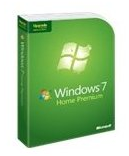





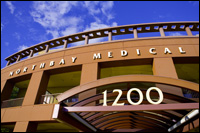




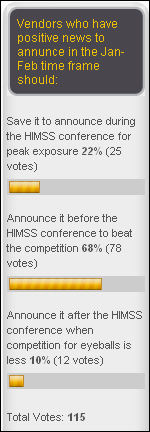
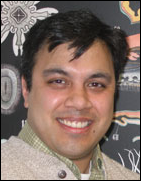





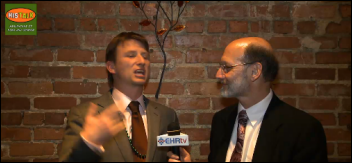








































![IngaLovesMyShoes[1] IngaLovesMyShoes[1]](http://histalk2.com/wp-content/uploads/2010/03/IngaLovesMyShoes1_thumb.jpg)



Merry Christmas and a Happy New Year to the HIStalk crowd. I wish you the joys of the season!